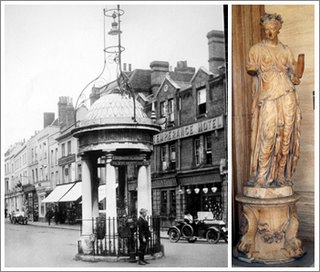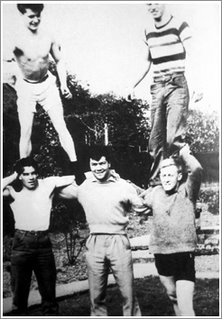MOVING STATUES
With thanks to Chelmsford Weekly News

In 1814, Naiad was moved from Tindal Square to Springfield. The Conduit, a domed stone rotunda, took her place. In 1852, the Conduit was moved to the corner of High Street and Springfield Road. It stayed there for almost 90 years, then being a traffic hazard, was moved unceremoniously in 1940 to Tower Gardens where it remains.
But where was the Chelmsford Naiad? It’s a long story, but suffice to say that in the 1960s she was located and donated to the Borough Council who placed her on display in the Chelmsford and Essex museum at Oaklands Park. Finally, in 1980, she returned to the Shire Hall. Here she stands today – minus her shield, part of her arms and a portion of her nose, but nevertheless - still beautiful.
The Shire Hall has flourished for over two centuries. It was built on the site of the old Sessions House which had been the seat of the Assizes and Justices (Le Tolhouse) since the 13th century. During its construction, the ancient courthouses were retained to allow the sessions to continue. Shire Hall, with its three storeys, five bays with three arched entrances were faced in Portland stone. Coade stone was used to create the panels showing Justice, Wisdom and Mercy, and are still there above the three windows. The Courtrooms, huge ballroom and furnishings were paid for by public subscription with a £20 contribution from the Lady of the Manor, Ann Mildmay.
The Shire Hall has been pivotal in all aspects of our County Town and it is fitting that our Naiad statue has returned safely home.








.png)
